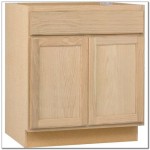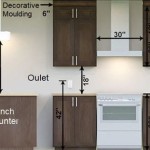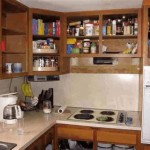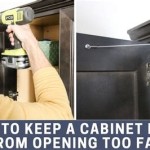How Much Do Wren Kitchen Fitters Earn?
Understanding the earning potential of a kitchen fitter working with Wren Kitchens requires a nuanced approach, considering various factors that influence their income. Wren Kitchens, as a prominent kitchen retailer in the UK, employs a network of fitters, both directly and through subcontracting arrangements. The compensation structure for these professionals can differ significantly based on employment status, experience, location, and the complexity of the projects they undertake.
This article aims to provide a comprehensive overview of the earning landscape for Wren kitchen fitters, exploring the different avenues through which they generate income and the elements that contribute to variations in their pay. It will delve into the typical pay structures, the impact of experience and skill level, the regional differences in pay rates, and the potential for earning additional income through bonuses and incentives. This information is crucial for individuals considering a career as a Wren kitchen fitter, as well as for those already in the field seeking to benchmark their earnings and understand the factors that influence their income potential.
Understanding the Base Pay Structure
The foundation of a Wren kitchen fitter's earnings lies in their base pay structure. This structure can vary significantly depending on whether the fitter is directly employed by Wren Kitchens or operates as a subcontractor. Directly employed fitters typically receive a fixed hourly wage or a fixed annual salary, offering a degree of financial stability and benefits. The hourly wage or annual salary offered varies depending on the geographical location and the existing experience of the employee. Wren Kitchens, like any large employer, bases its pay scales, to some degree, on cost of living and the general pay rates within certain regions.
Subcontractors, on the other hand, are typically paid per kitchen installation, with the rate determined by the size and complexity of the project. This "per project" rate may seem lucrative, but subcontractors are responsible for their own expenses, including transportation, tools, and insurance. The agreed-upon rate will take these expenses into account, hopefully ensuring a profitable business for the kitchen installer.
The exact amount paid per kitchen differs considerably, depending on several variables, including the size of the kitchen, the complexity of the design, the materials used, and the location of the installation. Simpler installations may command a lower rate, while intricate designs involving extensive plumbing, electrical work, and custom cabinet fitting will naturally attract higher compensation.
It is important to note that Wren Kitchens may use a tiered system, where fitters progress to higher pay grades based on their experience, performance, and qualifications. This system incentivizes fitters to improve their skills and deliver consistently high-quality work to earn better compensation.
The Impact of Experience and Skill Level
Experience plays a crucial role in determining a Wren kitchen fitter's earning potential. As with any profession, the more experienced and skilled a fitter becomes, the more valuable they are to the company or to their own subcontracting business. Experienced fitters are typically more efficient, able to complete installations faster and with fewer errors. This increased efficiency translates directly into higher earnings, whether they are paid hourly or per project.
Moreover, experienced fitters often possess a broader range of skills, including expertise in plumbing, electrical work, tiling, and carpentry. These diverse skills allow them to handle more complex installations and troubleshoot problems effectively, further increasing their earning potential. Wren Kitchens may also offer specialized training to its fitters, enhancing their skills and equipping them to handle the latest kitchen designs and technologies. These kinds of training programs will not just improve the skills of the kitchen installer, but may also lead to pay raises as their worth to the business increases.
Furthermore, experienced fitters are more likely to have established a strong reputation for quality workmanship and customer satisfaction. This reputation can lead to increased referrals and repeat business, further boosting their income. In the subcontracting world, a positive reputation is arguably the most important factor. It allows the kitchen installer to demand higher pay, and to pick and choose the most lucrative jobs, avoiding installations that are either too difficult, or situated in locations that are too far away.
Conversely, entry-level fitters or those with limited experience may start at a lower pay rate. However, they have the opportunity to progress through the ranks by gaining experience, developing their skills, and consistently delivering high-quality work. Wren Kitchens often provides mentorship programs or on-the-job training to help new fitters develop their expertise and advance their careers.
Regional Differences in Pay Rates
Geographical location significantly impacts the earning potential of Wren kitchen fitters. Pay rates tend to be higher in areas with a higher cost of living, such as London and the Southeast of England. This is due to the increased expenses associated with living and working in these regions, including housing, transportation, and general living costs. Wren Kitchens adjusts its pay scales to reflect these regional differences, ensuring that fitters are compensated fairly for their work in relation to the local cost of living.
Furthermore, the demand for kitchen fitters can vary across different regions. Areas with a higher volume of new home construction or kitchen renovation projects may experience a greater demand for fitters, leading to higher pay rates. Conversely, areas with a lower demand may see lower pay rates due to increased competition among fitters.
Travel time to and from job sites can also impact a fitter's earnings, particularly in rural areas or regions with heavy traffic congestion. Wren Kitchens may offer travel allowances or mileage reimbursement to compensate fitters for the time and expenses associated with traveling to job sites. Subcontractors need to factor in the traveling time to a job, as time spent driving is time that cannot be spent installing kitchens. In these circumstances, it makes sense to increase the bid price to cover this lost time.
Competition from other kitchen retailers and independent kitchen fitters can also influence pay rates in a particular region. If there are several other companies vying for the same pool of skilled fitters, Wren Kitchens may need to offer more competitive pay and benefits to attract and retain talent.
Earning Additional Income Through Bonuses and Incentives
In addition to their base pay, Wren kitchen fitters may have the opportunity to earn additional income through bonuses, incentives, and overtime pay. Bonuses are often awarded for meeting specific performance targets, such as completing a certain number of installations within a given timeframe or achieving high levels of customer satisfaction. These bonuses can provide a significant boost to a fitter's overall earnings.
Incentive programs may also be offered to encourage fitters to upsell additional products or services to customers. For example, a fitter may receive a commission for recommending and installing additional accessories, such as lighting, appliances, or storage solutions. These incentives can be a valuable source of supplemental income for fitters who are skilled at building rapport with customers and identifying their needs.
Overtime pay is typically offered to fitters who work beyond their standard working hours. This can be particularly relevant during peak seasons when there is a high demand for kitchen installations. Overtime pay is typically calculated at a higher rate than regular pay, providing fitters with an incentive to work longer hours and earn more money.
Subcontractors may also have the opportunity to earn additional income by taking on larger or more complex projects, which command higher rates. They can also increase their earnings by managing their time effectively and optimizing their workflow to complete more installations within a given timeframe. Furthermore, subcontractors can build relationships with other tradespeople, such as plumbers and electricians, to offer a more comprehensive service to customers and increase their earning potential.
Factors Affecting Subcontractor Profitability
For self-employed kitchen fitters, profitability is not simply a matter of calculating gross earnings. Overhead costs substantially impact the amount of income retained. These costs must be factored into pricing decisions to ensure the business remains viable.
One significant cost is transportation. This includes fuel, vehicle maintenance, and insurance. The distance to job sites and the efficiency of the vehicle directly affect these expenses. Fitters operating in rural areas or attending jobs scattered across a wide region will incur higher transportation costs.
Tooling and equipment represent another key expense. Kitchen fitters require a comprehensive set of hand and power tools, which need to be regularly maintained and replaced. The cost of purchasing and maintaining these tools can be considerable, particularly for specialized equipment required for certain types of installations.
Insurance is a non-negotiable aspect of running a kitchen fitting business. Public liability insurance is essential to protect against claims arising from accidents or damage to property during installations. Professional indemnity insurance may also be necessary to cover claims related to errors or omissions in the fitter's work.
Marketing and administrative costs also contribute to overhead. These costs include advertising to attract new clients, managing invoices and payments, and handling customer inquiries. While these expenses may seem small individually, they can add up over time and impact profitability.
Finally, taxation is a critical factor. Self-employed fitters are responsible for paying their own income tax and National Insurance contributions. These payments can represent a significant portion of their earnings, so it is crucial to set aside sufficient funds to meet these obligations.
The Role of Customer Satisfaction in Earning Potential
Customer satisfaction plays a vital role in determining a Wren kitchen fitter's long-term earning potential. Positive customer feedback leads to increased referrals, repeat business, and a strong reputation, all of which contribute to higher earnings. Wren Kitchens typically places a strong emphasis on customer satisfaction, and fitters who consistently deliver excellent service are more likely to be rewarded with bonuses, incentives, and preferential job assignments.
Fitters who are adept at communicating with customers, understanding their needs, and addressing their concerns are more likely to achieve high levels of customer satisfaction. This involves being polite, professional, and responsive to customer inquiries, as well as providing clear and accurate information about the installation process. It is important to explain the specifics of the installation clearly, especially when working with customers who are unfamiliar with this type of work.
Moreover, fitters who take pride in their work and pay attention to detail are more likely to deliver a high-quality installation that meets or exceeds customer expectations. This includes ensuring that all components are properly installed, that the kitchen is clean and tidy after the installation is complete, and that any issues are resolved promptly and effectively. Attention to detail, and care in carrying out the work, will ultimately result in a better finish.
Conversely, negative customer feedback can damage a fitter's reputation and lead to reduced earnings. Wren Kitchens may withhold bonuses or incentives from fitters who receive consistently negative feedback, and they may even face disciplinary action or termination if their performance does not improve.
Therefore, it is essential for Wren kitchen fitters to prioritize customer satisfaction and strive to deliver excellent service on every project. By building strong relationships with customers and exceeding their expectations, fitters can enhance their earning potential and build a successful long-term career.

How Much Do Kitchen Fitters Earn Checkatrade

How Much Do Kitchen Fitters Earn Checkatrade

How Much Do Kitchen Fitters Earn Checkatrade

Kitchen Fitting Installation Approved Service Wren Kitchens

About Wren Kitchens Working For Careers
New Kitchen Advice Nolte Detailing World Forum

Kitchen Islands 27 Island Ideas For 2024

How Much Does A New Kitchen Cost

Kitchen Fitting Installation Approved Service Wren Kitchens

Kitchen Islands 27 Island Ideas For 2024
Related Posts








